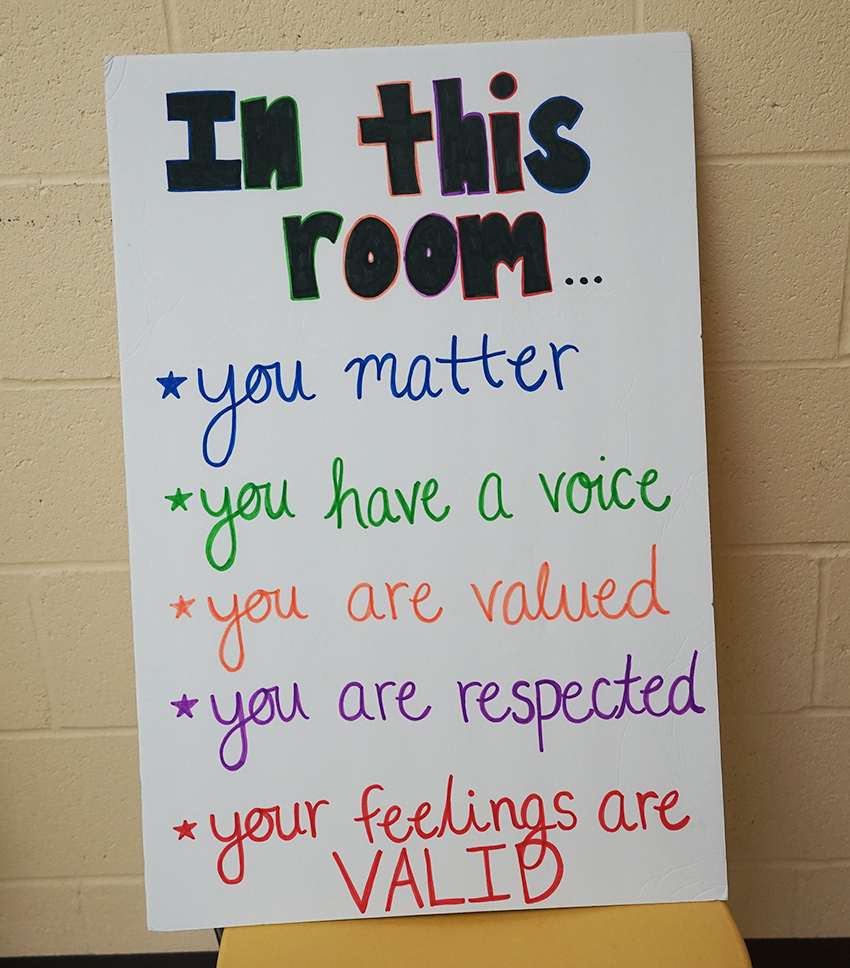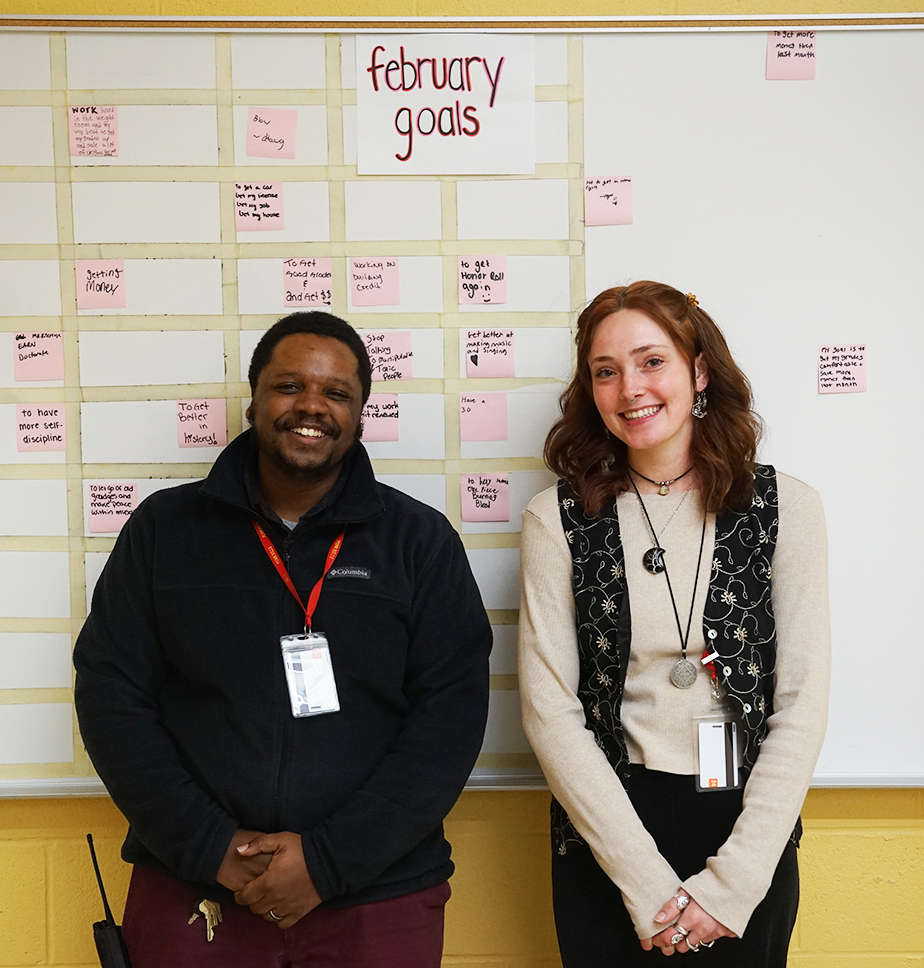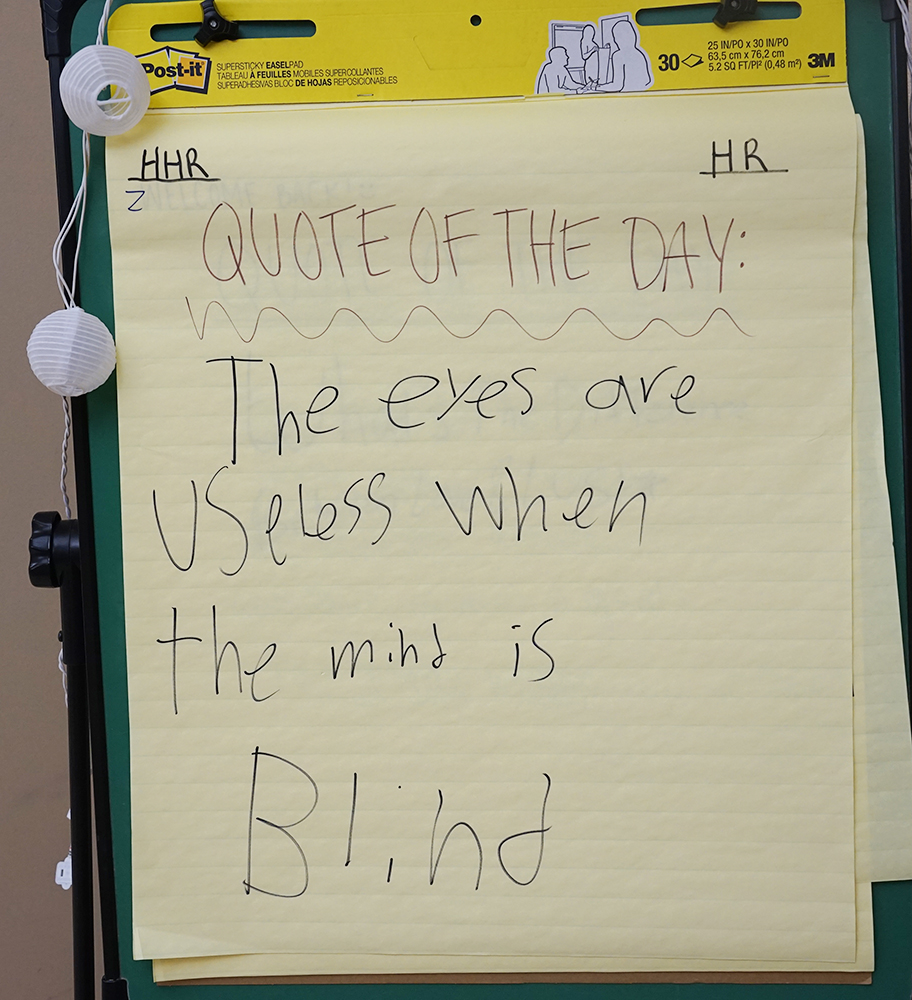
When asked about success stories within the New Directions program at the Penn Hills School District, Thomas Kilcrease’s and Carter Carles’ eyes light up.
There’s been a lot. Carles remembers taking on a group of five friends, with one student in particular doing the worst out of the group in school. That student is now well on track to pass his grade level, and is tops academically within his group of friends. Another student turned his academics around, and got his first 100 percent on a test.
“He came back just to tell me he got 100 percent because he never got 100 percent on a test before. He was like ‘call my parents and tell them,’” Carles said.
“Just to see him light up and be so proud of himself was awesome.”
“These are the types of stories that get us here every day,” Kilcrease added. “We’re starting to see kids who haven’t ever experienced academic success realize that they can do it.”
New Directions is an alternative to suspension program in the Penn Hills School District, first piloted several years ago at the district’s Linton Middle School, when former superintendent Nancy Hines looked to bring a more restorative approach to the district. The program had so much success that the district decided to expand it to the high school in 2022.
That’s where Kilcrease and Carles work. Kilcrease is a New Directions counselor, and has been with the program since its inception at the high school. Carles works in the district through Pressley Ridge, and joined this school year as a New Directions liaison. The program is supported by Project SEEKS SES, a grant partnership between the Allegheny Intermediate Unit (AIU) and the Allegheny County Health Department (ACHD) that addresses trauma, behavior and mental health issues in ten school districts.
So what is New Directions? At the high school, the program has steadily evolved. Kilcrease and Carles deal with behavioral counseling and helping students get on the right track academically, among other things. They might also help connect students with mental health resources, should they need them, while also bringing in outside providers to work with the students, like Expect Respect or the Neighborhood Resilience Project.
Students are assigned to the program by the building principal for behavioral and academic issues. The end goal isn’t to discipline the student but to do the program’s namesake — send students in a new direction.
“I”m so thankful and so pleased with them. It’s such a breath of fresh air for this school,” said Penn Hills High School principal Tricia Mayo. “I am absolutely amazed at how they’ve been able to provide this level of support for our students emotionally, socially and academically.”
“What it does is kind of replace the old ISS (in-school suspension) model. Normally, the old ISS model is you kind of sit in a room and do your work — that sort of thing. But what we started to do is have conversations,” Kilcrease said of the program. “We have conservations that help the students think about their decisions and behavior and why they were referred to the New Directions and hopefully conversation leads to strategy and goals for behavior change.”
Both Kilcrease and Carles remember spending time in ISS at one or another as students. They don’t believe they learned much from the experience — beyond short-term consequences. New Directions has allowed the two to give back to students something they wish they had in difficult times.
“I think we’re helping them learn so much more about themselves, and that’s something I never got,” Carles said. “Nobody else told us when we were younger, and now they have us to learn these things that we didn’t.”
New Directions will often start with some conversations — conversations that continue throughout a student’s time in the program. Carles will look at a student’s grades, attendance and work they’ve missed, and print it out. She then goes over SMART goals with the student, before discussing overall goals, like where they want to be in life and what they want to work towards, while also examining who and what motivates them.
“I’m trying to understand who they are outside of academics, and then I set up a support plan,” Carles said. “That helps them look at themselves so much differently, and it helps me understand who they are.”
Carles will also help tutor students if necessary. This wasn’t initially part of the New Directions plan, but Carles’ good memory and willingness to help in any way she can has made this an invaluable piece of the puzzle.
“I don’t know how I remember everything from high school, but I do somehow. In the classroom, a lot of kids don’t want to raise their hand and ask for help. And a lot of them are getting up and leaving because they just don’t get it,” Carles said. “So I can sit down with them and help them get it, so now they’ll stay in class because they understand what’s going on.”
Beyond academics, Carles and Kilcrease help train the students in things like self-control, self-awareness and self-accountability. These learned skills have been valuable in reducing fights. Throughout it all, Carles and Kilcrease oftentimes have to dole out tough advice and reality checks. Getting students to listen — while it might take some time— isn’t too difficult, as Kilcrease noted him and Carles are generally relaxed, chill people. Plus, the students can tell they care.
“They have this trust towards us. They know that we care, and we’re going to be honest about where they are, whether it’s about their academics or things in their personal life,” Kilcrease said. “You may not like it, you may not like what we have to say, but they keep coming back because they respect the fact that we care enough about them to be honest and have those conversations.”
After the honesty, Kilcrease is quick to note that him and Carles always have a plan for a student, and aren’t just doling out reality checks without laying out steps for change. And those steps continue, even after a student is out of New Directions. Kilcrease and Carles regularly check in with students, even after they’ve reached success outside of the program.
Their docket of students continues to grow, but that doesn’t stop Kilcrease and Carles from being who they are — well-intentioned, genuinely kind people, who just want to see students thrive.
“We definitely know that we’re a big part in helping some students get through the day,” Carles said. “And that feels good.”



